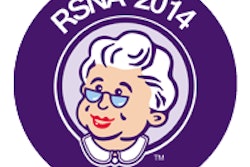
After a period of rapid increase from 1993 to 2007, use of medical imaging in the emergency department (ED) declined, mostly because of decreased utilization of CT and MRI, according to a new study published this month in the American Journal of Roentgenology.
"Although our data do not allow causal determination, the decline in the use of imaging since 2007 is likely the result of a number of factors, including concerns regarding ionizing radiation exposure, increased scrutiny of high-cost imaging ... [and] a culture change brought about by leadership advocacy for increased appropriateness in imaging," wrote Dr. Ali Raja and colleagues (AJR, August 2014, Vol. 203:2, pp. 355-360).
They investigated the use of imaging at Brigham and Women's Hospital from January 1993 through December 2012. During this time, the number of emergency department patient visits increased 28%, from about 48,000 to about 61,000 per year. The group also tracked the severity of illness for the ED visits and categorized the number of imaging studies by modality (x-ray, ultrasound, CT, MRI, and other), as well as each exam's associated relative value units (RVUs).
The group found that total imaging RVUs increased 267% from 1993 to 2007, then decreased 19.2% by 2012. The total number of imaging studies increased 66.5% for the earlier time period, then decreased 17% by 2012.
"From 1993 through 2012, the net effect is equivalent to a 5.6% increase in RVUs per year and a 1.6% increase in accession numbers per year over the 20-year study period, whereas visits increased at a rate of 1.2% per year," Raja's group wrote.
The researchers also found the following:
- Total RVUs related to ED imaging per 1,000 visits increased 208% from 1993 to 2007, then decreased 24.7% from that year to 2012.
- The total number of imaging exams per 1,000 ED visits increased 47.8% from 1993 until 2005, then decreased 26.9% from 2005 to 2012.
- CT RVUs per 1,000 ED visits increased 493% until 2007, then decreased 33.4%.
- MRI RVUs increased a whopping 2,475% until 2008, then decreased 20.6%.
- Sonography RVUs increased 75.7% over the study period, while radiography RVUs declined 28.1%.
Raja and colleagues had hypothesized that the use of imaging in the emergency department would continue to increase throughout the study period. But this was not the case.
"The decrease in imaging is even more significant because it occurred in the context of either stability or an increase in the severity of illness in the ED patient population (as measured by median emergency severity index and by mean admission rate)," the group wrote.
Why the decline, especially in CT and MRI? The discussion of how to better protect patients from radiation exposure influenced the shift, although it can't be the sole factor, according to Raja and colleagues. Although it is possible that concern about radiation exposure helped reduce the use of CT, it's unlikely to fully explain the shift, because the use of CT for inpatients at Brigham and Women's continued to rise until 2009, the group wrote. Another reason for the decline could be recent publicity about the cost of CT and MRI.
Finally, a new focus on curbing inappropriate use of advanced imaging is another explanation, at least at Brigham and Women's, according to the team. For example, in 2008, the hospital established a decision-support tool for duplicate exams that let referring physicians know of prior studies of the same body part with the same imaging modality performed within the past 90 days.
"This intervention was associated with a 5% decline in repeat CT use," Raja and colleagues wrote.
In any case, since advanced imaging can result in improved outcomes for patients, it's important to keep in mind that the issue is not black and white, according to the researchers.
"[Advanced imaging's] benefits must be weighed against the costs and the potential harms of exposure to ionizing radiation," they concluded.



















